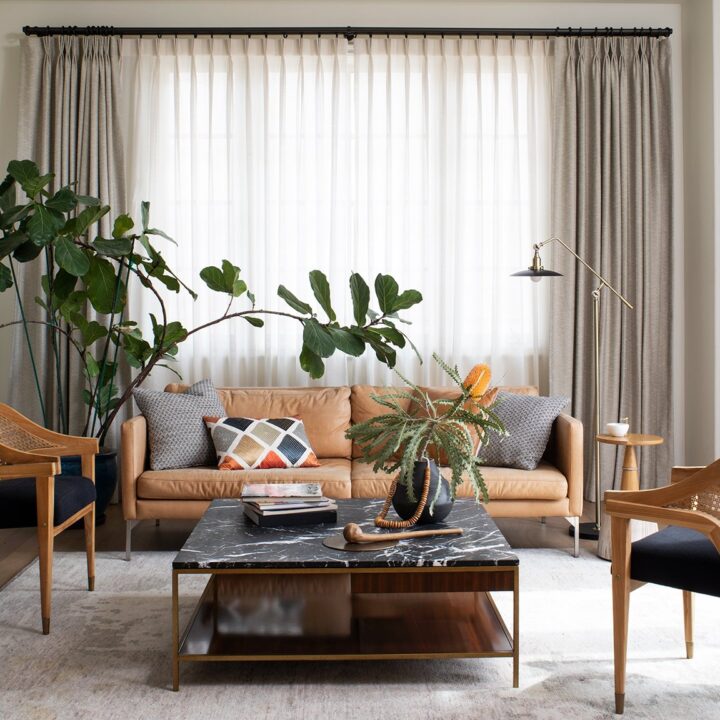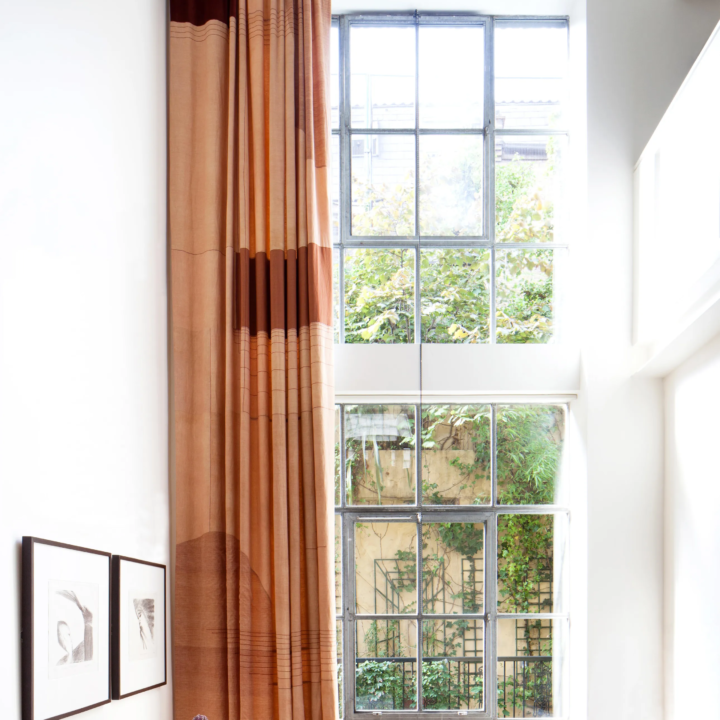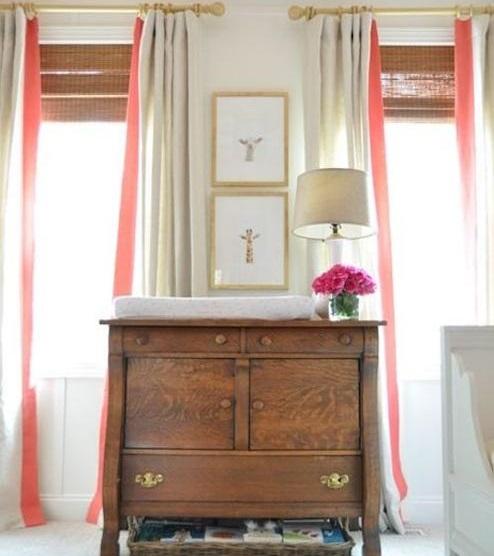Spiffy Speak
OPEN DOORWAY CURTAINS: TOP TIPS & IDEAS
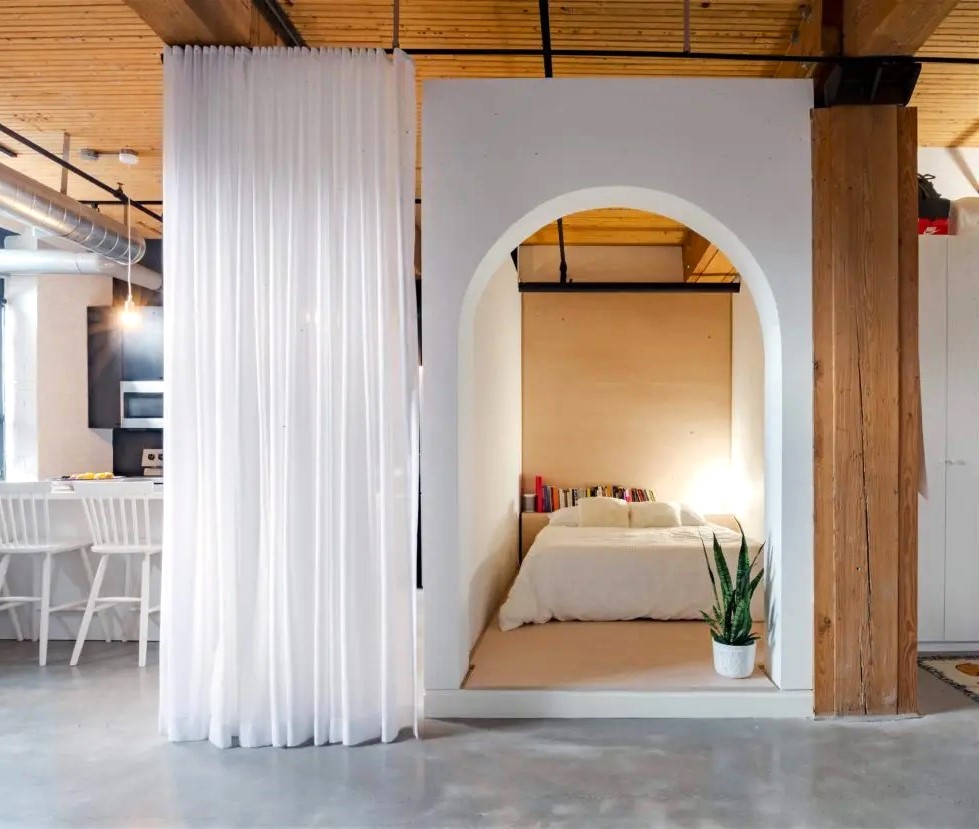
Open doorways add an element of grandeur to the home, and some, with their specialty shapes, serve as showstopper architectural features. But while the absence of doors in an open doorway helps to foster a sense of openness and free flow, the want for privacy or the need to create boundaries for other reasons might leave you with second thoughts. Besides, the room for aesthetic enhancement cannot be ignored, especially if you like to make the journey through the home a rich visual experience. That’s where open doorway curtains come into play.
The flowy trails and rippled contours of drapery hold many promises – of assuring privacy and sound absorption, of topping up the insulation against extreme weather, and of adding visual depth, drama and softness. So, if your doorway lacks a bit of oomph right now, or if the practical needs beckon coverage, entrust that mandate to curtains. Based on your specific requirements, you can customize your drapery, all the way from the choice of the fabric to the desired drop-point. And, so that you neither miss the aesthetic opportunity nor the functional ease, here are some tips for dressing up a doorway with curtains:
Shop for custom curtains that perfectly frame your doorway and give a couture look. With over 3000 drapery fabrics featuring a variety of colors and patterns, find the one that reflects your style and matches any decor!
Consider the Unique Structural Aspects of your Doorway
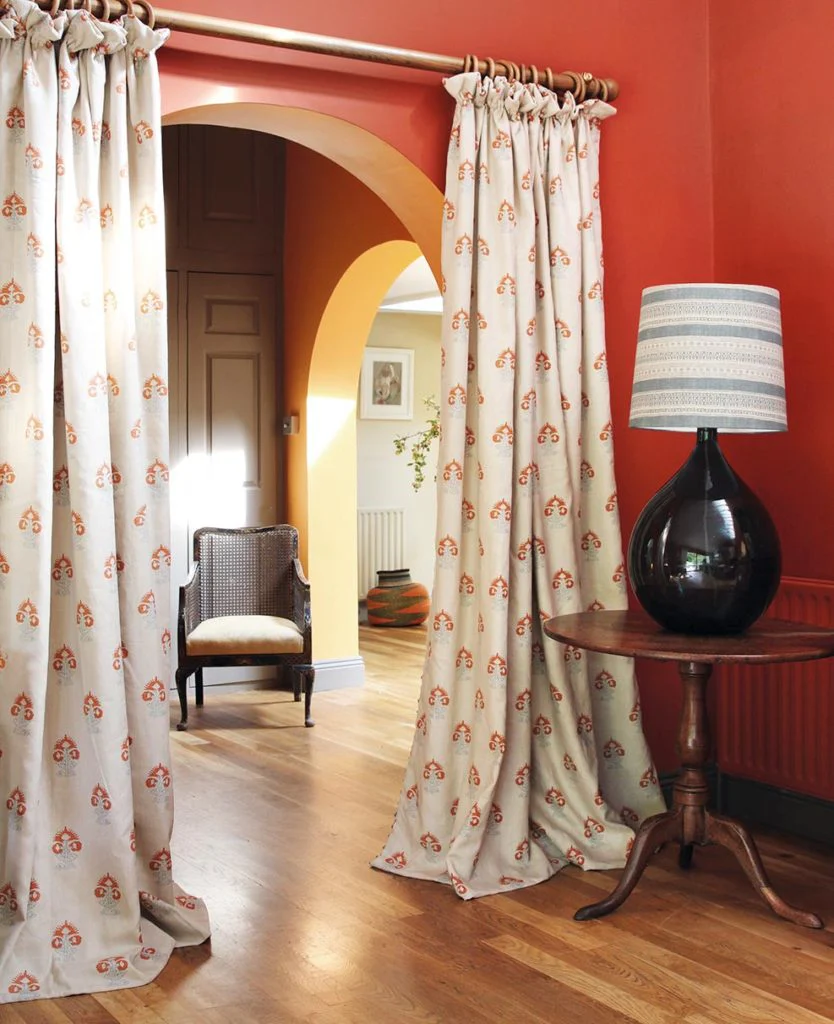
When draping your doorway, consider its structural aspects keenly. A doorway with a decorative shape calls for drapes that bring its uniqueness under the spotlight. Whereas, an ordinary squarish doorway without detailed molding or ornate trims looks to curtains to add the missing pizzazz. Also, the architectural details of the doorway will impact the hardware decisions. Depending on the type of doorway you have, here are some factors you might want to consider:
ARCHED DOORWAY: Arched doorways bring an organic beauty to the otherwise squarish structures of the house. When covering these with curtains, you can consider arched drapery poles that are custom-made if you want to highlight its charming profile. However, it can be more expensive than the standard straight rods/poles. If using straight hardware, ensure that your hardware is installed higher and wider than the arch so that the curtains don’t cover up the arched feature when stacked to the sides.
DOORWAY WITH TRANSOM WINDOWS: For doorways that have transom windows above them, consider whether you want to include them in the coverage. If you are looking for flawless light control, it is better to make your curtains start from above them. If not, you can hang your drapery pole on the wall space between the transom window and the doorway. Note that floor-to-ceiling coverage can emphasize the height of the room, so if you want to use your curtains for open doorways to add a moment of grandeur, it is better to ignore the transom window and opt for full-scale coverage.
DOORWAY WITHOUT WALL SURROUND: Doorways that are flush with the walls on one or both sides require some forethought concerning hardware. If there is no wall surround at all around the doorway, consider inside-mounting the curtains with the drapery pole affixed to the interior of the doorway frame. In this case, go for sleek curtains to facilitate easy passage and cancel tripping accidents. If there is wall space on one side, mount the curtains outside the frame. Install the drapery pole such that it extends beyond the trim on that side and sits flush with the adjoining wall on the other, using a curtain bracket instead of a finial. Then, install a single panel that can be easily stacked to one side.
Choose your Doorway Curtain Fabric with Certain Aesthetic Considerations
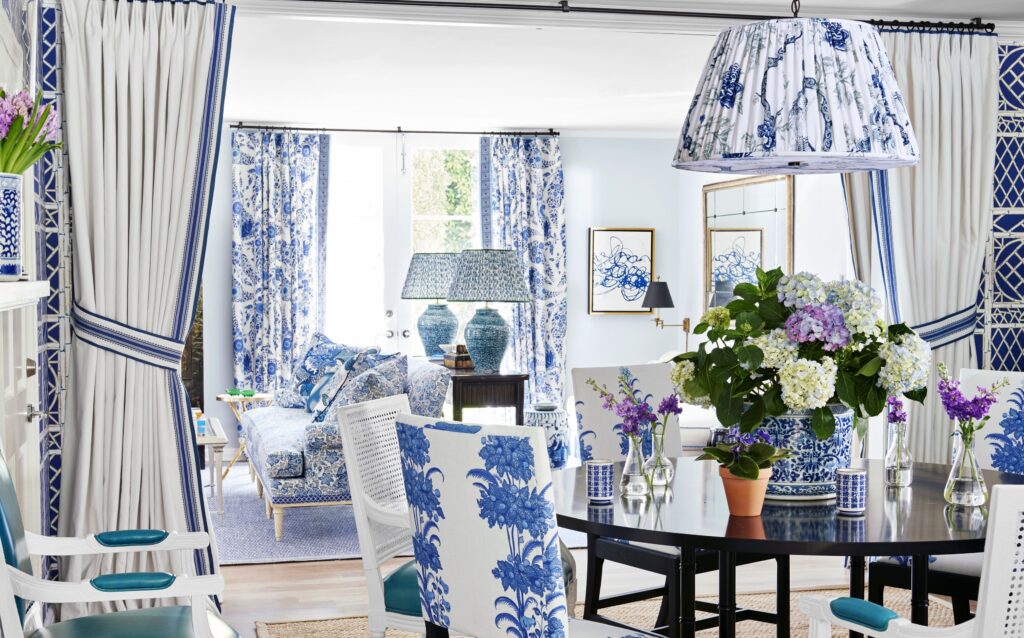
Doorways are like instrumental interludes in a song. At the very least, they provide a smooth transition from one verse to another, but, if composed with a stirring melody, they can convert a very ordinary score into a heartwarming masterpiece. So, besides stylizing individual rooms, let your doorways also shoulder the responsibility to aesthetise your home, because it is these little details that make all the difference between ‘ordinary’ and ‘extraordinary’. So, begin these aesthetic considerations with the choice of the fabric.
For traditional formal spaces, bring a moment of allure with plush velvet drapes or dazzling silk curtains. Complement them with ornate drapery poles and hold-backs for a fitting finishing touch. In modern homes and casual spaces, opt for simple homely fabrics like cottons and linens.
Be mindful of selecting fabrics that are presentable on both sides as doorway curtains add to the visual appeal of both the rooms that the doorway connects. So, avoid embroidered fabrics, one-sided prints and plain fabrics that don’t exhibit the same colors and textures on both sides. To be doubly sure, always order swatches and inspect them firsthand.
Also, consider your lining decisions from the same point of view. After choosing a beautiful double-sided fabric, you don’t want to hide one side behind the lining. However, if you have chosen a velvet fabric or any other fabric that meets your taste but falls short of a presentable rear side, the lining can offer camouflage. In such cases, consider going for a dapper lining such as a lustrous satin that we’ll be very happy to provide on special request.
So, this is the bottom line. The drapery must tie in with the palettes and design styles of all the rooms that the doorways connect. So, the choice of the drapery fabric and the decision to line or not line the curtains must hinge on this aspect.
Select the Heading Style with Forethought
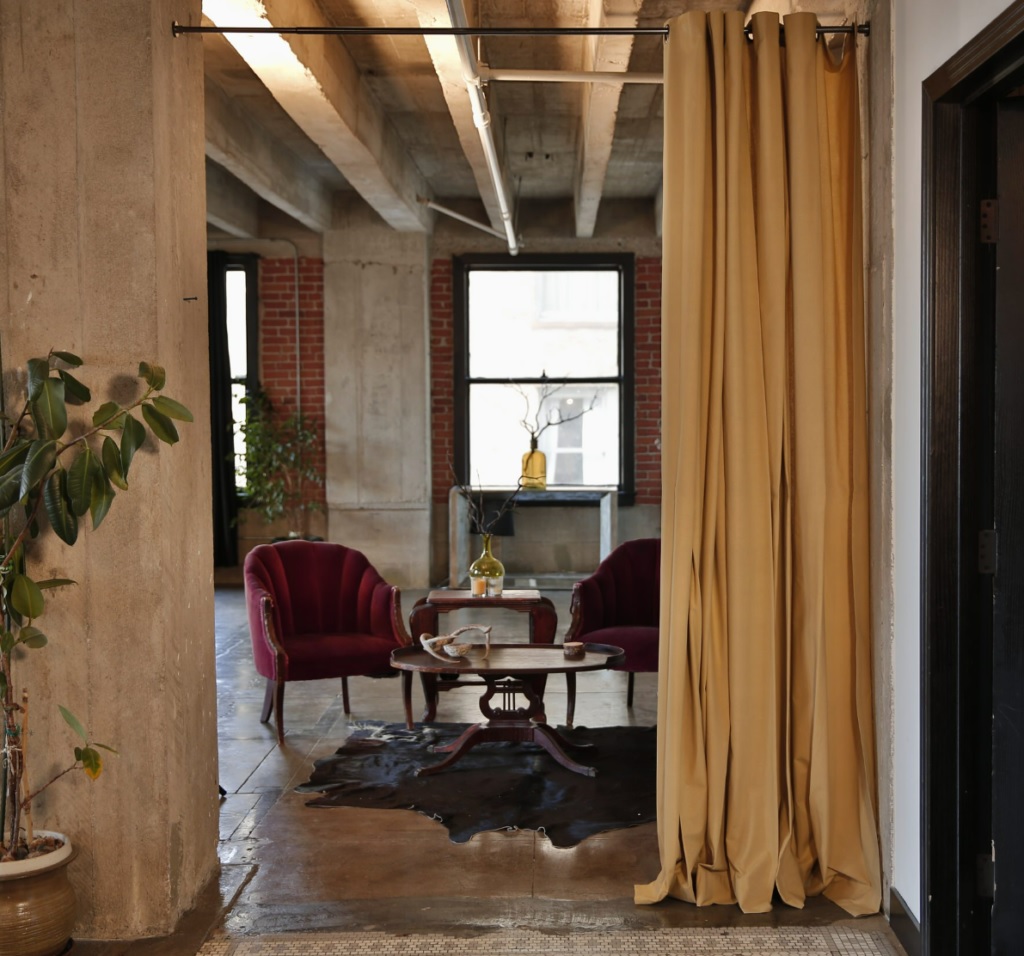
After the fabric, the heading style of your curtains for open doorways is the next most influential aspect that determines the visual appeal of the drapery. For example, heading styles with pre-stitched pinch pleats feature a very architectural appeal with their rich folds and uniform gather. Whereas, in other heading styles, curtains form pleats as they gather on the pole, offering a less structural appeal that is fitting for informal spaces and modern decor styles.
If your doorway curtains primarily serve an aesthetic purpose and will always be plopped on the wall, the pinch pleats, with their formal sumptuous appeal can be considered. But if you expect to use them for functional purposes, it is better to avoid these styles as the rear side is not as presentable as their festive front side. Here, we recommend styles like grommet tops, rod pockets and flat panel tops that look almost the same on both sides.
Secondly, the heading style also determines how smoothly the curtains move on the pole. If you want your doorway curtains to glide easily on the pole, choose heading styles that operate on rings or clips like pinch pleats, flat panel tops and grommet tops, to name a few.
At Spiffy Spools, you have the luxury of choosing from among more than a dozen heading styles, each with a unique combination of aesthetics and functionality. So, do take the time to read about each heading style, explained in detail in our Drapery Headings Style Guide, to arrive at a well-informed decision.
Be Mindful of the Length
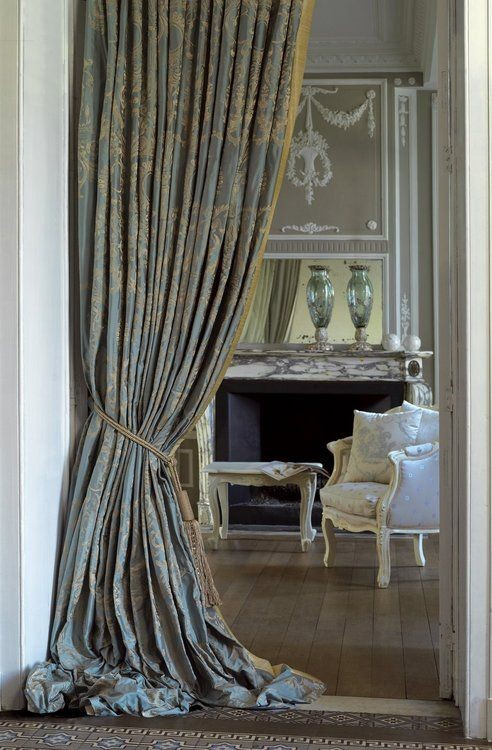
Floor-length drapes are the default choice for doorways, but the exact drop point is the question that needs to be addressed. You can leave the curtains slightly touching the floor in a modern streamlined fashion or puddled extravagantly in true classical style. Either way, your decor style, aesthetic preferences and functional requirements should set the parameters for the choice.
Lavishly pleated ‘puddled’ curtains are an aesthetic statement fitting for entry points to formal spaces. Their long trails pooled on the floor in plush piles can serve as a showstopper visual that sets the mood for a formal gathering. However, they are not the best choice if you anticipate frequent operation as long puddled curtains are slow to move on the pole and will sweep the floor with operation. Also, avoid puddling the curtains on narrow and high-traffic doorways to avoid stumbling on them during hurried transits.
For functionally efficient doorway curtains, that you wish to open and close frequently with ease, consider more practically-efficient lengths like ‘float’, ‘graze’ and ‘break-puddle’ in which the curtains can function smoothly as well as spare you the risks of tripping accidents.
To discern which length is ideal for your doorway curtains, learn more about the various curtain length options in detail from our blog How Long Should My Curtains Be where we have elaborated on the nuances of each drop point.
Consider the Number of Panels

The number of curtain panels needed depends upon the width of the entry and the overall look you are aiming to create. Although the standard practice is to add a curtain panel on each side, narrow doorways beg to be treated as exceptions. Here, convenience has to be prioritized, but rest assured that the aesthetics will not be devalued. Install a single panel and secure it to the wall with a fancy hold-back. The pretty swag on the top half will add a unique visual appeal and also, camouflage the narrowness of the doorway by blurring its silhouettes on one side.
A decent-sized doorway, on the other hand, will benefit from the visual balance brought about by two drapery panels framing it on both sides. Not only will it foster symmetry in the design, but it will also help to distribute the weight of the drapery on the hardware more evenly.
Maximize Convenience and Minimize Risks
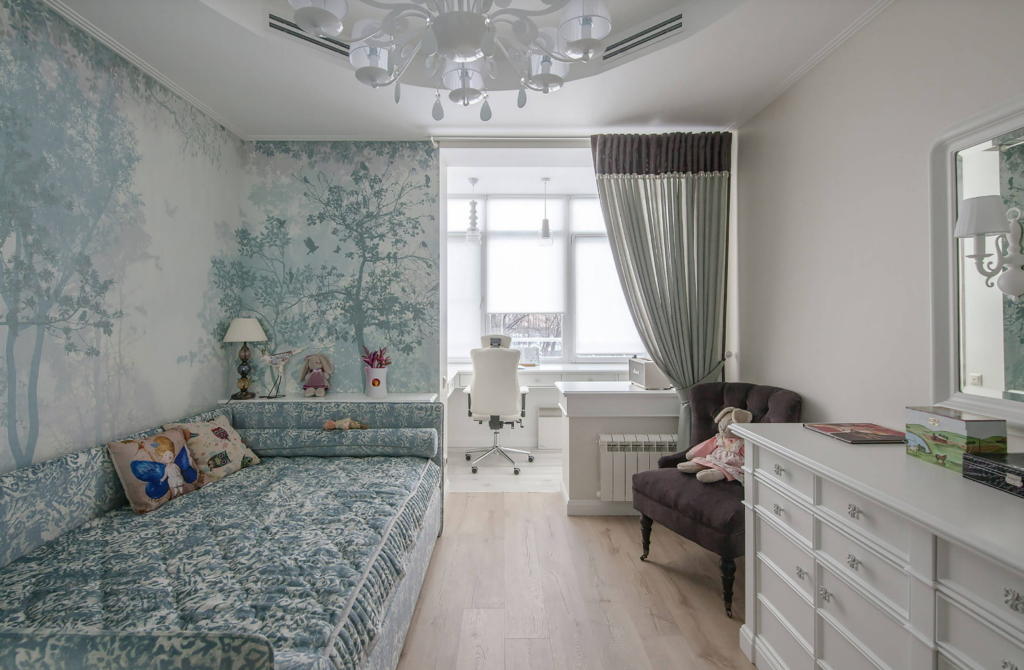
Unlike the case of windows, doorways are used for passage. Therefore, to avoid any tripping accidents, doorway curtains must be mindfully designed to clear the way when stacked to the sides rather than create an intrusive block. So, ensure sufficient stacking room on the sides for your curtains so that they will clear the doorway completely or at least not block the way substantially when tied back.
Curtains typically gather down to 20-25% of the panel width when stacked. The goal is to accommodate this stack on the walls rather than allow the gathered drapes to encroach upon the open doorway. To achieve this, extend your drapery rod at least 6-12 inches beyond the door’s trims where drapery can gather.
If you don’t have free wall space to provide stacking room around your doorway, take extra care to select lightweight fabrics that will take less room to stack. Also, select sleek heading styles like grommet tops and flat panel tops that require very minimal space to stack. In narrow doorways, avoid bulky fabrics like velvet and heavy cotton, and elaborate heading styles like triple pinch pleats and inverted box pleats that will take more stacking space.
Also, lock the last ring/loop of the curtain between the finial and the bracket of the drapery rod so that the curtain stays anchored on the wall, unmoved by winds or the tugs of someone’s hands. Make use of drapery tie-backs or hold-backs so that the curtains don’t flare at the bottom, barring all risks of them causing accidents.
In Closing
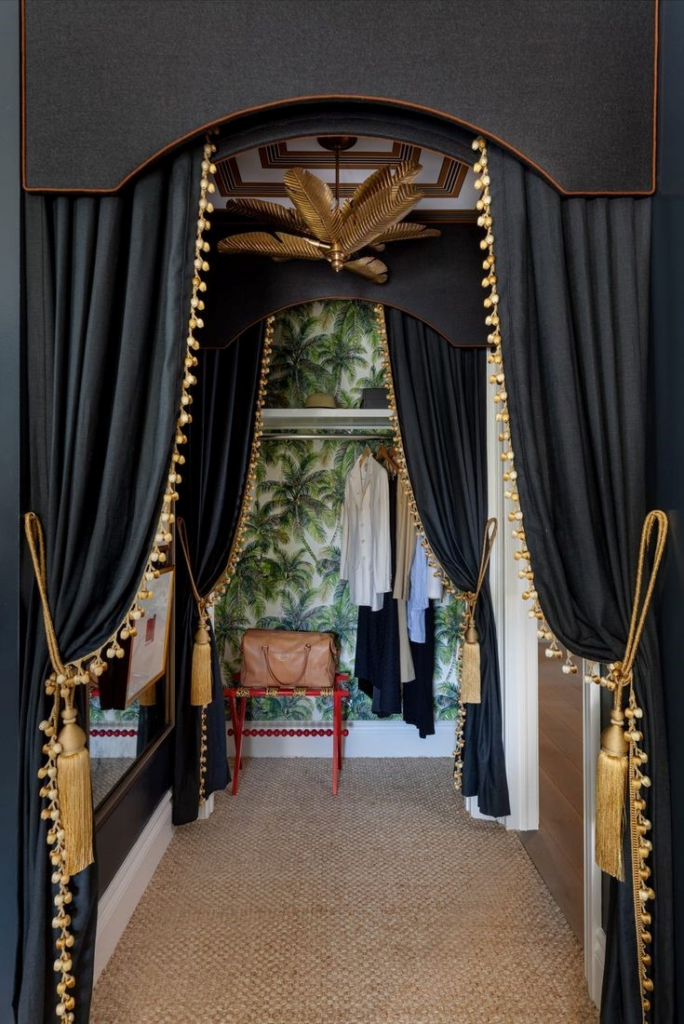
Open doorway curtains present the grand opportunity of bringing the tactility, colors and patterns of textiles in a substantial amount into the decor. They also call upon well-considered design decisions as they define the transitional moments of the architecture. Whether the purpose is to provide privacy or to offer a decorative touch to the interiors, curtains execute the task remarkably. They can be made to blend into the walls or stand out with a striking presence; either way, they are not ever short of softening the hard walls with their contoured elegance. So, make the most of your open doorways curtains to accentuate the personality and comfort of your home. Browse the Spiffy Spools collection today and elevate the visual appeal and functionality of your spaces with the right doorway curtains!
READ MORE: PATIO GLASS DOOR CURTAINS: IDEAS & TIPS

